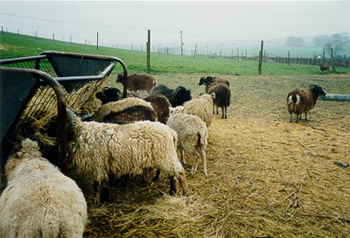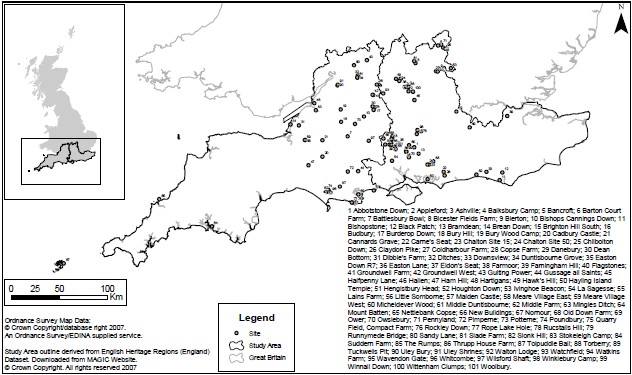A Review of Animal Bone Evidence from Southern England
Ellen Hambleton, 2009. https://doi.org/10.5284/1000102. How to cite using this DOI
Data copyright © Dr Ellen Hambleton unless otherwise stated
This work is licensed under the ADS Terms of Use and Access.
Primary contact
Dr
Ellen
Hambleton
School of Conservation Sciences
Bournemouth University
Talbot Campus
Fern Barrow
Poole
BH12 5BB
UK
Resource identifiers
- ADS Collection: 883
- DOI:https://doi.org/10.5284/1000102
- How to cite using this DOI
Introduction

This project, funded by English Heritage, aimed to review the animal bone evidence from Late Bronze Age-Late Iron Age sites from southern England. The Regional Review report (Hambleton 2008), for which this database serves as a freely available online appendix, provides a synthetic review of published faunal assemblages. Key themes include: animal husbandry; diet and economy; agricultural diversification and specialisation; and the nature of 'special deposits'. Assessments of species frequency and relative abundance confirm that domestic mammals predominate.
Consequently, analyses (e.g. ageing, butchery, biometric data) focus on the exploitation and deposition of sheep, cattle, pig, horse and dog. Other taxa (e.g. wild mammals, birds, fish and amphibians) are also discussed. Regional variations are evident in the availability and composition of faunal assemblages. Understanding of the Bronze Age relies heavily on a small number of large faunal assemblages, while the Iron Age dataset is more extensive. Zooarchaeological evidence comes mainly from the Wessex chalklands. The far Eastern and Western counties yield significantly fewer assemblages. Prehistoric pastoral farming in areas outside Wessex and 'off the chalk' requires further investigation. Landscape-based 'environs' studies, are identified as an important way forward in expanding our understanding of prehistoric farming communities. Integration of faunal data with other lines of archaeological evidence also has considerable potential to provide new insights. The review summarises current understanding of later prehistoric animal exploitation in the region, highlights gaps in current knowledge, and makes recommendations for future research.
Scope of the review
In order to maximise the quality information included in this review, sites yielding faunal assemblages were required to meet certain criteria before being included within the review dataset. All criteria have their advantages and limitations, and the database necessarily includes occasional exceptions to these criteria; these are discussed in the full report.

Criteria for inclusion
- Sites fall within the defined geographical Southern Region
The region incorporates the whole of the English Heritage Southwest and Southeast regions (Figure 1). - Sites have faunal assemblages that fall within the defined Middle/Late Bonze Age to Late Iron Age period
This period ranges from 1500BC - AD43. - Sites have complete reports on the faunal assemblage published and/or in the public domain
- Sites have faunal assemblages with circa 200 or more fragments identified to species
Summary of the dataset
A total of 108 site reports were recorded in the database. These 108 'site' records correspond to reports from excavations at 101 separate monument locations. These sites generated 154 distinct 'assemblage' records for faunal assemblages. Wherever possible a full suite of data was recorded for each assemblage, including: mammal, bird and other taxa present; species quantification, ageing, sexing, body part representation, butchery and metrical observations for the main domestic mammals; and details of associated bone groups. This standard suite of information was collected wherever available and free-text note fields enabled additional observations to be recorded. All data and interpretations summarised in the database are based on the information provided in the published faunal reports.
Bibliographic references for all zooarchaeological reports reviewed are listed in the database.
Reference
Hambleton E. 2008. Review of middle Bronze Age - late Iron Age faunal assemblages from Southern Britain. Research Department Report Series number 71-2008. English Heritage.






